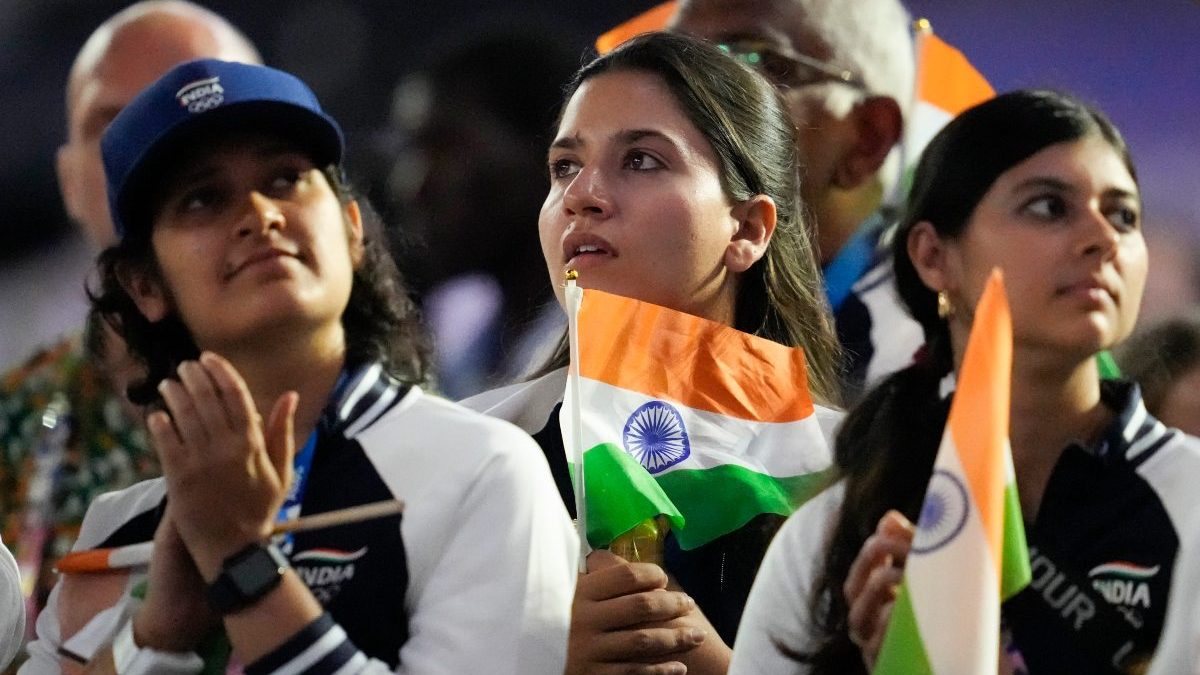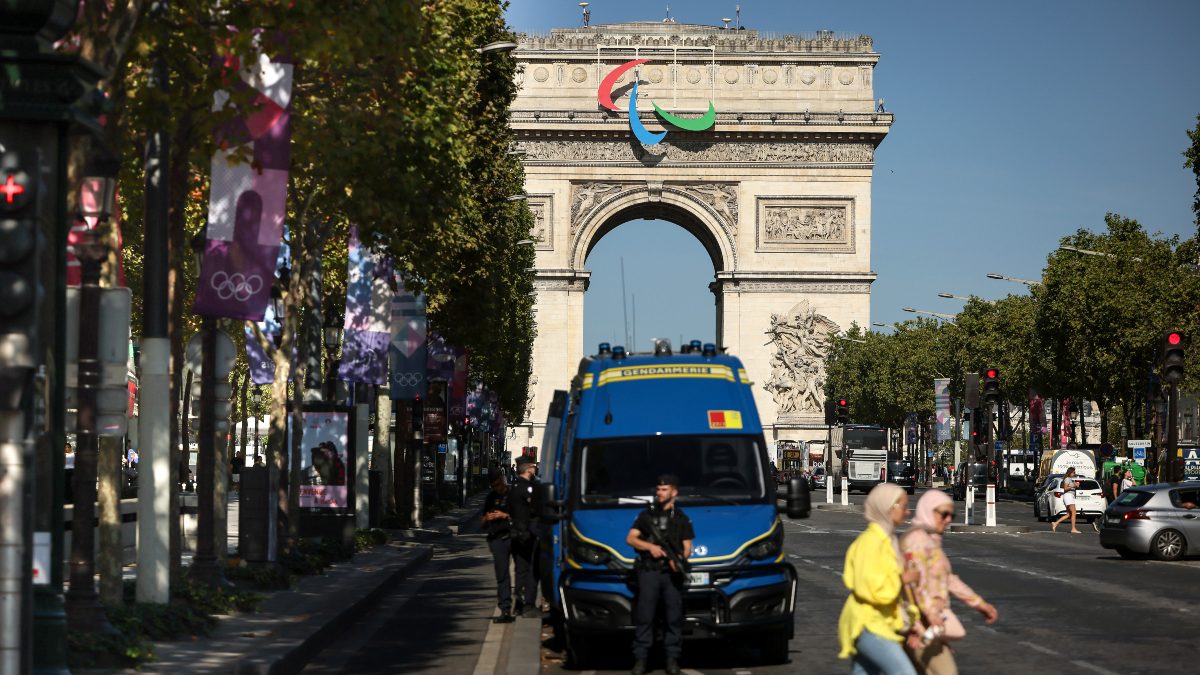Constant mental conditioning support for Indian athletes and long-term planning are key takeaways from the Paris 2024 Olympics, which can help India boost their medal tally at Los Angeles 2028 and beyond. read more
)
Indian contingent failed to live up to the expectations, finishing with six medal at Paris Olympics 2024. AP
Six Indian athletes missed out on medals at the Paris Olympics by the barest of margins. Maheshwari Chauhan and Anant Jeet Singh Naruka in the skeet mixed team could not lay their hands on the bronze because Jiang Yiting and Lyu Jianlin of China scored one more point than them. Mirabai Chanu, silver medallist from Tokyo, missed out on a record-breaking medal by 1kg, lifting a total of 199kg when the bronze was won with a lift of 200kg.
This left India with a total of six medals - one silver and five bronze.
A tally similar to that of London 2012 and one less than Tokyo 2020. But in Tokyo, Neeraj had won a gold and in London, there were two silvers to India’s name.
India at Paris Olympics: Haryana, with 2% of the population, clinched 66.66% of the medals
In all, India have had a disappointing campaign in Paris, eventually finishing 71st in the medal tally and finding themselves surrounded by nations like Lithuania, the Republic of Moldova, Kosovo, Cyprus, and Fiji. With all due respect to these countries, India have spent a large amount on its athletes through the Target Olympic Podium Scheme programme, but the return on investment is far from ideal. And it’s not just about the money that is spent on athletes - the infrastructure at the elite level and coaching support have also improved drastically over the years, especially with private players taking a keen interest.
A whopping Rs 470 crore was spent by the Indian government on the 16 sports in which Indians qualified for the Paris 2024, which means every medal at the Summer Olympics came at a cost of Rs 78.3 crore. It’s a flawed way of calculating the ROI considering the distribution across sports varied but it gives you an idea of how costly it’s proving to be for India to win a medal at the Olympics.
India at Paris Olympics in numbers: 6*, 6, 52, 12, 100 and more
For things to change, the thinking also has to change.
India are planning to bid for the 20236 Olympics which will be a massive expenditure, running into thousands of crores but hosting the Summer Games won’t guarantee medals in double digits — proper planning and executions will.
So here are some learnings from the Paris Olympics 2024, which can help India boost their medal tally at Los Angeles 2028 and beyond.
Greater focus on mental conditioning
Winning a medal is a great achievement but the toughest task is to defend. The Indian men’s hockey managed to win consecutive medals at the Olympics for the first time in 52 years and captain Harmanpreet Singh had no qualms in admitting that mental conditioning coach Paddy Upton had a big role to play in it.
“From first to last (game), we played as a unit and backed each other in search of the gold medal. Definitely, Paddy Upton has a big role to play in this," Harmanpreet said after the bronze medal win.
A number of Indian athletes or teams, sports-wise, had mental trainers or high-performance coaches but it wasn’t consistent. The archery team had a psychologist approved by the Indian Olympic Association (IOA), while the badminton team had none.
India at Tokyo 2020 vs Paris 2024: What changed from seven medals to six
In archery, we saw Ankit Bhakat and Dhiraj Bommadevara make history by becoming the first Indians to go past the quarter-finals stage as they lost in the mixed team bronze medal match. In badminton, Lakshya Sen came close to a medal twice, and despite being in the lead in the semi-finals and the bronze medal match, he went down on both occasions to come back empty-handed.
It’s amply clear that in modern-day sports where there’s extra scrutiny and attention with the emergence of social media and the quick flow of news, it’s imperative to have a mental conditioning coach for athletes across different events and disciplines. And not only during the Olympics but throughout the Olympics cycle, especially with Indian athletes who have shown a tendency to falter under pressure.
Pick the potential winners and back them
Manu Bhaker’s redemption arc where she came back from the Tokyo 2020 debacle to win two medals and make history as the first individual athlete from the country to do so is a good example of what perseverance can deliver. Manu was already a prodigy going into the Tokyo Olympics, having won gold at the Youth Olympics and ISSF Shooting World Cup, but her first Olympics proved to be a trial by fire.
The best part, however, was Manu not losing sight of what could be possible, and not getting lost like countless Indian athletes have. Three years from a terrible show in Tokyo, Manu is a shooting legend in India in her own right.
Lakshya in badminton, Arjuna Babuta, Maheshwari Chauhan, and Anant Jeet Singh Naruka in shooting, Ankita and Dhiraj in archery, Nishant Dev in boxing, Reetika Hooda and Nisha Dahiya in wrestling and Balraj Panwar in rowing showed some promising signs. They didn’t win a medal but the potential medal winners must be afforded an environment where they can prosper and come back strongly at LA 2028.
Long-term planning
India’s population-to-medal ratio is being discussed widely on the internet. Six medals for 1.45 billion people translates to one medal per 241.67 million people. That’s a very dispiriting stat.
For China, who won 91 medals with a population of 1.42 billion, the population-to-medal ratio stands at 15.6 million, while it’s just 2.64 million for the USA for one medal.
The truth, however, is the fact that the USA sent close to 600 athletes to Paris to win the highest of 126 medals including 40 gold, and China, who came second, sent a little over 400 athletes.
India, on the other hand, had 117 athletes in the fight with many qualifying through rankings and not by meeting the criterias.
The biggest-ever contingent, of 119, came at Tokyo and resulted in the best-ever medal haul of seven.
This has to be India’s long-term vision, to increase the number of athletes qualifying for the Olympics significantly. For that, don’t just look at LA 2028 but beyond.
The solution to such a problem is multifold and also the most cost-intensive and time-consuming but it has to be done. The funding has to increase to cater to a significantly large number of athletes and to produce and employ a sufficient number of coaches to guide and train future Olympians.
It’s a long game, but seeds for it have to be sown now.
Watching sports and writing about it are my favourite things in life and I try to bring you the best from the sporting world at Firstpost. see more

 1 month ago
19
1 month ago
19
)
)
)
)
)
)
)
)
)
)
)
)
)
)
)
)
)
)
)
)
)
)
)
)
)
 English (US) ·
English (US) ·